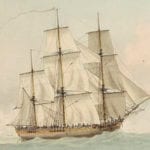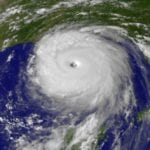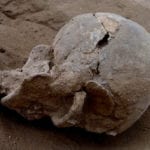 Weird Stuff
Weird Stuff  Weird Stuff
Weird Stuff  Mysteries
Mysteries 10 Tragic Disappearances and Deaths in Joshua Tree National Park
 History
History 10 Ways Childhood Really Sucked in the Old West
 Music
Music 10 Name Origins of Famous Bands from the 1990s
 Religion
Religion 10 Biggest Turnarounds by the Catholic Church
 Weird Stuff
Weird Stuff 10 Unbelievable Times Laws Had Unintended Consequences
 Humans
Humans Ten Historic Women Who Deserve Way More Credit Than They Got
 Movies and TV
Movies and TV 10 Films That Spawned Major Lawsuits
 History
History Ten Times Towns Were Wiped Off the Face of the Earth
 Creepy
Creepy 10 of the Most Disturbingly Haunted Public Houses in the UK
 Weird Stuff
Weird Stuff 10 Niche Subcultures That Are More Popular Than You Might Think
 Mysteries
Mysteries 10 Tragic Disappearances and Deaths in Joshua Tree National Park
 History
History 10 Ways Childhood Really Sucked in the Old West
Who's Behind Listverse?

Jamie Frater
Head Editor
Jamie founded Listverse due to an insatiable desire to share fascinating, obscure, and bizarre facts. He has been a guest speaker on numerous national radio and television stations and is a five time published author.
More About Us Music
Music 10 Name Origins of Famous Bands from the 1990s
 Religion
Religion 10 Biggest Turnarounds by the Catholic Church
 Weird Stuff
Weird Stuff 10 Unbelievable Times Laws Had Unintended Consequences
 Humans
Humans Ten Historic Women Who Deserve Way More Credit Than They Got
 Movies and TV
Movies and TV 10 Films That Spawned Major Lawsuits
 History
History Ten Times Towns Were Wiped Off the Face of the Earth
 Creepy
Creepy 10 of the Most Disturbingly Haunted Public Houses in the UK
10 Forgotten Explorers And Their Expeditions
History tends to look very kindly on those with an adventurous spirit. Whatever their mishaps and shortcomings might have been, they get remembered as courageous explorers who braved the unknown, and their perilous journeys become almost as famous as they do. Think of Edmund Hillary conquering Everest or Robert Scott’s trips to Antarctica. Of course, not every explorer achieves this level of fame. Some of them are almost forgotten, though they put themselves at considerable risk to help us better understand the strange world around us.
10Joseph Thomson’s African Trek

During the “Scramble for Africa” in the late 19th and early 20th centuries, most European powers were aggressively trying to colonize as much of Africa as possible through force or diplomacy (typically force). During such a time, expeditions like those of Scottish geologist Joseph Thomson tend to stand out. He became renowned for not killing a single native or losing any of his men to violence during his exploration of Africa. His motto was “He who goes slowly goes safely; he who goes safely goes far.”
This is quite remarkable, considering that Thomson led six separate expeditions through uncharted African territory, covering over 24,000 kilometers (15,000 mi). He mapped out most of Kenya, Nigeria, and Morocco for the Royal Geographical Society and researched many prominent landmarks such as Mount Kilimanjaro and Lake Tanganyika. Thomson’s Falls in Kenya is named after him, as is the Thomson’s gazelle.
His expedition to Lake Victoria in 1883 was his most memorable journey. It was also his most perilous, as Thomson had to make sure to avoid the hostile Maasai people as well as competing German traders. At one point, Thomson was captured by the Maasai but was spared an execution when he convinced them that he was a witch doctor by using effervescent salts.
9Pedro Cabral’s Trip To India
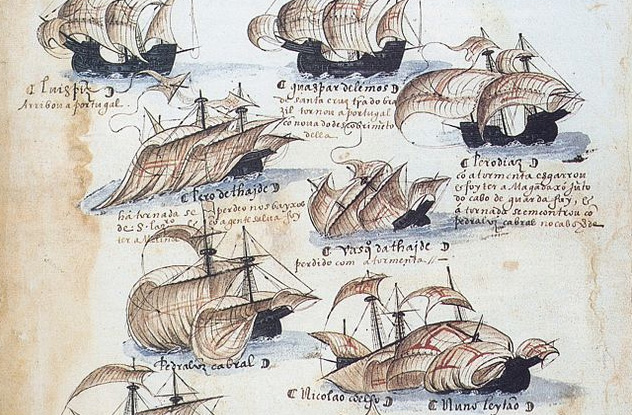
Initially, it looked as if Portuguese navigator Pedro Alvares Cabral had a straightforward mission—follow the route to India established by Vasco da Gama and come back with spices. However, his journey turned out to be more eventful than anticipated. On the way there, Cabral got into a few fights, lost a few ships, won a few ships, and also became the first European to discover Brazil.
Everything started on March 9, 1500 when Cabral left Lisbon with 13 ships. He was quickly carried by winds farther west than intended. On April 22, he spotted land, which he incorrectly concluded was an island and named the Island of the True Cross. We mostly know it by its modern name—Brazil. Obviously, Cabral immediately claimed the land in the name of Portugal, but he still managed to maintain peaceful relations with the native people. Cabral’s first real mishap came when his fleet was passing through the Cape of Good Hope and a storm sank four of his ships along with all the men onboard.
In September, Cabral reached India and established a trading post in Calicut. However, tensions with the local Muslim traders led to a bloody battle in which Muslims attacked and killed most of the people inside the trading post. In retaliation, Cabral bombarded the city and captured 10 vessels before leaving for friendlier pastures. In the end, four of his ships made it back filled with spices, and his mission was deemed successful.
8Benjamin Leigh Smith’s Arctic Adventures
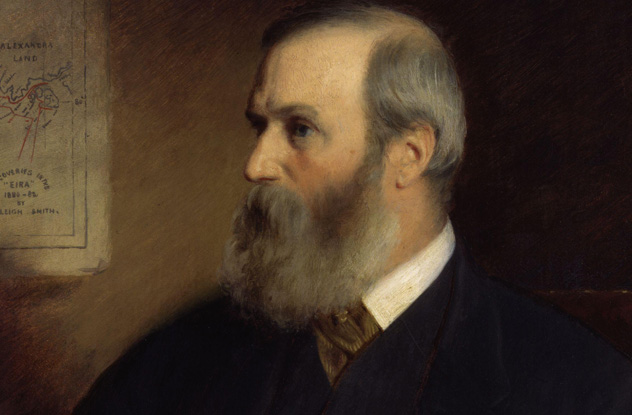
The Arctic and Antarctic expeditions of the late 19th and early 20th centuries have made legends out of many daring explorers such as Ernest Shackleton and Roald Amundsen. But, as usually happens in these cases, some explorers simply got left out of the history books. That was the case with Benjamin Leigh Smith, a British explorer who undertook five expeditions to the Arctic from 1871–1882.
Most of his trips were to Svalbard and Franz Josef Land, two archipelagos in the Arctic Ocean comprising approximately 200 islands total. On one of the expeditions in 1881, Smith’s ship was locked by ice, and he was forced along with his crew to take refuge on nearby Northbrook Island. They’d be stuck there for 10 months. During that time, the crew survived by hunting walruses and using whatever provisions were salvaged. Eventually, they built boats using tablecloths as sails and made it out to sea, where they were finally rescued. Smith didn’t lose a single man.
To be fair, a lot of Benjamin Leigh Smith’s anonymity was self-imposed. He typically avoided public appearances and never published a memoir detailing his Arctic exploits. Today, there are only a couple of glaciers and a nearby island named after him to remind us of Smith’s accomplishments.
7Carsten Borchgrevink’s Southern Cross Expedition

When talking about Antarctic exploration, the first (and typically only) Norwegian explorer that comes to mind is Roald Amundsen. He was the first person to ever reach the South Pole, and the race between his group and Robert Falcon Scott’s doomed expedition became the stuff of legend. However, another Nordic explorer deserves a mention—Carsten Borchgrevink. His expedition predated Amundsen’s by over 10 years. Although he never reached the South Pole (a feat considered almost impossible at the time), Borchgrevink did set the new record for going the farthest south.
The expedition was known as the Southern Cross, and it took place from 1898–1900. Financed by English publishing magnate George Newnes, Borchgrevink took a ship and left London for Cape Adare. That is where the shore party of 10 people made camp (also the place that would be used as a home base 10 years later by Scott). It was never Borchgrevink’s main objective to reach the South Pole. Although he certainly considered it a possibility, the expedition’s goals were scientific in nature. Half of the shore party members were scientists who studied meteorology, cartography, and geology. Nobody apart from Borchgrevink was an experienced Antarctic explorer, so trying to reach the South Pole would have been borderline suicidal.
Despite Borchgrevink eventually getting overshadowed by Amundsen’s accomplishments, he still has his legacy. Amundsen’s “Framheim” base was destroyed long ago, while Borchgrevink’s base at Cape Adare is still standing and is now considered a historic site.
6David Douglas’s Trip Through The Rockies
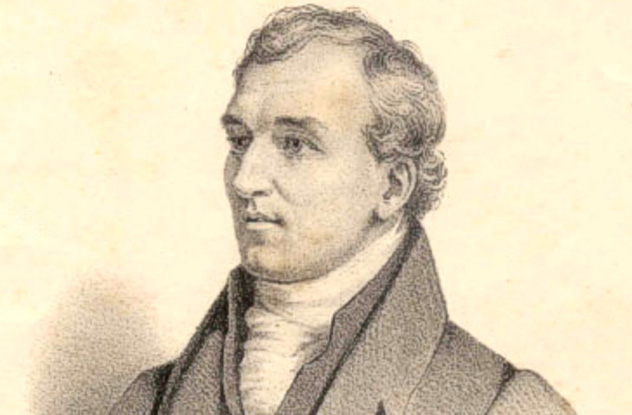
David Douglas, a renowned Scottish botanist, undertook several trips through North America in the 19th century, discovering many new plants along the way. He also brought back hundreds of plant species and successfully introduced them to Britain, particularly the Douglas fir, which is named after him. Douglas’s second expedition in 1824 through the Rocky Mountains turned out to be his most productive, although it wasn’t without its mishaps.
There are two things worth noting about Douglas at this stage. He wasn’t a geologist, and the man was almost as blind as a bat. Regardless, he left his party while traversing the Rockies through the Athabasca Pass and climbed the mountain. Douglas did manage to reach the peak and saw another mountain roughly the same height a little to the south. He called them Mount Hooker and Mount Brown after two other famous botanists. This was fine, but Douglas also reported that these were the highest mountains in North America.
According to him, both mountains were 5,000 meters (16,000 ft) above sea level, and everyone believed him. It wasn’t long until maps were showing these giant peaks in the Rockies, and mountaineers were racing to see who would climb them first. Unfortunately, they seemed to be having a bit of trouble finding them because the giant peaks didn’t exist. The mountains mentioned by Douglas were only 2,750 meters (9,000 ft) and 3,000 meters (10,000 ft) respectively. It wasn’t until 70 years later that someone reread his journals and discovered the mistake.
5John Ainsworth Horrocks’s Outback Adventure
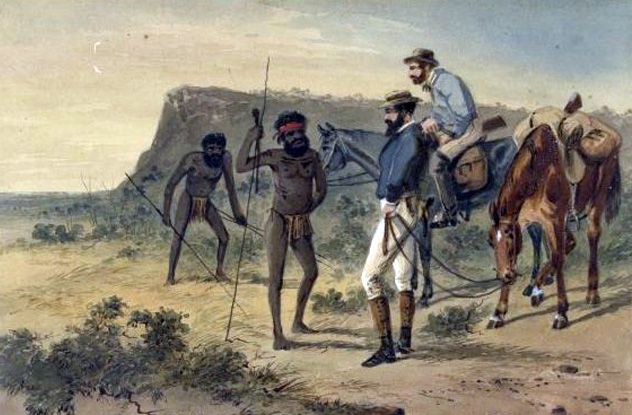
John Ainsworth Horrocks, a 19th-century English farmer and explorer, was among the first Europeans to explore the Australian outback. However, his achievements were overshadowed by the tragic yet unique way in which he met his demise during one of these trips.
His first exploratory expedition came in 1840, although this time he was simply looking for good land for his farm. He set off from Adelaide and explored the areas near the Hutt River, also founding Penwortham village in the meantime. He established a large farm in Clare Valley and went back to Britain in 1842 before returning two years later.
Bored with the life of a farmer, Horrocks returned to exploration and uncovered more of the outback. Several landmarks such as Horrocks Pass and Mount Horrocks still share his name. In 1846, he undertook another trek, looking to explore the region near Lake Torrens for more agricultural land. Horrocks had five other people with him, as well as an entire menagerie of animals, including a camel.
It wouldn’t be long before camels became essential for Australian exploration, but back then, Horrocks was one of the pioneers to introduce the animal into this environment. Unfortunately for him, that particular camel was often hostile toward the rest of the group. Horrocks himself got the worst of it—the camel shook him while he was reloading his gun. This caused Horrocks to shoot himself in the face. He was taken home, where he later died of gangrene.
4Charles Waterton’s Exploration Of Guyana
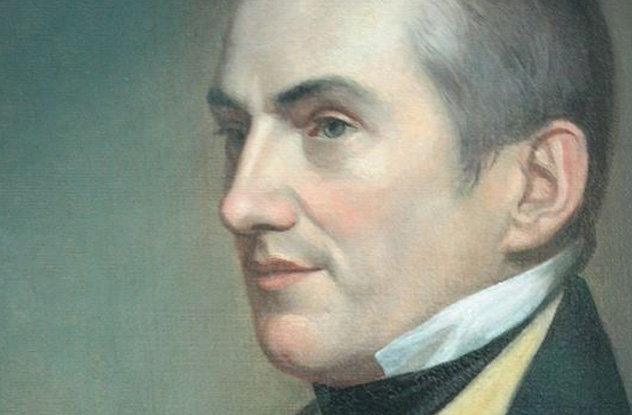
Charles Waterton was a 19th-century English aristocrat. Just like any good aristocrat, he was a bit loony. He was a passionate naturalist, and his trips exploring the wildlife of Guyana became the stuff of legend, especially after Waterton published his wildly successful book, Wanderings in South America.
Waterton’s approach to interacting with wild animals was hands-on enough to make Steve Irwin blush. In one single trip, Waterton obtained hundreds of examples of insects, birds, and reptiles, which he promptly dissected and stuffed. In fact, he perfected his own taxidermy method using a special concoction of chemicals that let Waterton manipulate the animals into lifelike poses.
Waterton obtained most small species from local tribes. The big ones, however, were a bit harder than that. In fact, his book details his efforts to obtain a wild caiman. His native helpers offered to shoot the giant reptile or kill it with curare darts, but Waterton wanted a pristine specimen, so he ended up tackling the caiman with his bare hands. A similar story involved capturing a giant snake.
When Waterton got back home to England, he undertook several conservation projects. During the 1820s, he opened the world’s first nature reserve on his estate, Walton Hall. In 2013, his collection of specimens went to the Wakefield Museum, with Sir David Attenborough there to express his admiration for the 19th-century naturalist. The giant caiman was among the exhibits.
3Richard Burton’s Journey To Mecca
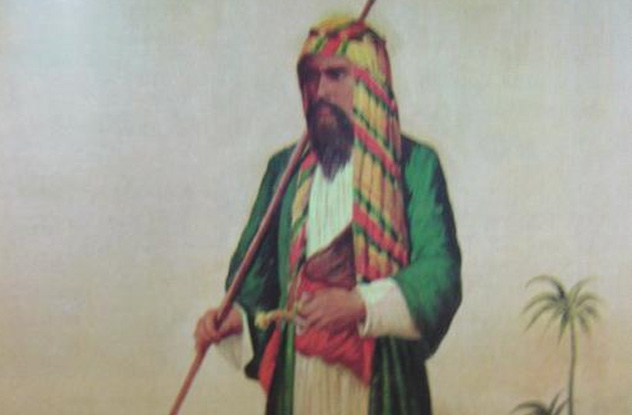
Sir Richard Burton attained worldwide fame for his African trek alongside John Speke to find the source of the Nile. Burton was considered a jack-of-all-trades, skilled in cartography, geography, linguistics, and writing. He could reportedly speak up to 25 different languages (40 if you’re counting dialects).
Before his trip to Africa, Burton became one of the first Europeans (and, more notably, one of the first non-Muslims) to successfully make a Hajj (pilgrimage) to Mecca. He took a massive risk, as Mecca was a forbidden city, off-limits to non-Muslims. Burton disguised himself as a Muslim pilgrim, but any mistake could have given him away and likely cost him his life.
Just looking the part would not have been enough. Burton had to be familiar with Muslim traditions if he was to pass as one of them. Fortunately for him, Burton was already fluent in Arabic and pretty knowledgeable of Islamic customs after being stationed as a soldier in India. According to legend, Burton even had himself circumcised to better fit in. In July 1853, Burton was granted a leave of absence from the British Army and left for Mecca from Egypt.
Even as a Muslim, his journey was dangerous, as Burton’s caravan traveled a road frequently attacked by bandits. Despite the perils, Burton returned successfully a few months later and published a book on his trip to Mecca. It became a sensation in Europe and turned him into a folk hero.
2The Bornu Mission
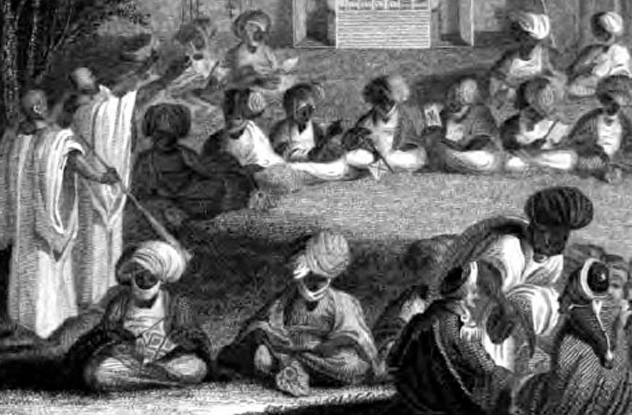
In 1821, English explorer Dixon Denham received the mission of exploring western Africa and establishing a trade route with the Kingdom of Bornu (modern-day Nigeria). He was accompanied by Scottish explorers Lt. Hugh Clapperton and Dr. Walter Oudney. The men set off from Tripoli and would have to cross the Sahara desert to reach their objective. Previous European attempts to do so had all proven unsuccessful.
Right off the bat, problems arose between the Englishman and the two Scots. They had neglected to choose their leader beforehand. The Scots thought Clapperton should be in charge since he was the most experienced, while Denham thought he himself should to be in charge because he felt like it. This created a lot of tension between Denham and Clapperton. Denham even tried to sabotage Clapperton’s leadership by sending back reports of him having homosexual affairs with his Arab servants.
Clapperton wrote about the dangers of traveling the Sahara. He mentioned that the central plateau was littered with skeletons. Despite their issues, the men reached Kuka, the capital of the Bornu Empire, becoming the first Europeans to successful traverse the Sahara. From there, they went their separate ways—Denham explored the region around Lake Chad, and the Scotsmen went to visit nearby states. Oudney died of illness, and Clapperton proceeded to travel alone. Upon returning to Kuka, he met up with Denham. In 1825, the two men returned to Tripoli and then to England, refusing to speak to each other during the whole 133-day trip.
1Sebastian Snow’s Amazonian Adventure

Sebastian Snow started his exotic exploits in the 1950s. Ccompared to everyone else on this list, his adventures are quite recent. However, his eccentricities and royalist attitude were very reminiscent of Victorian explorers from the good ol’ days. Whenever trying to communicate with foreigners, his strategy was to “just speak the Queen’s English loud enough, and everybody understands.”
When he was 22, Snow signed up for an expedition looking to discover the source of the Amazon River. His group aimed to verify the notion put forward by a couple of French explorers that Ninococha, a glacial lake, was the water source for the Maranon River, the largest tributary of the Amazon. Snow and his companion John Brown set off in April 1951 and confirmed the theory.
This was the point where the mission should have ended. However, Snow wanted to become the first person to raft down the entire length of the Amazon. This was completely spur-of-the-moment. Snow was unprepared and barely had any supplies. He managed to survive by stumbling from one friendly village to another, where he could find supplies and food.
Snow had to deal with dangerous rapids, violent bouts of malaria and dysentery, and all the lethal animals the Amazon could throw at him. At one point, he was even approached by a pirate canoe, but he just started yelling Spanish-like gibberish at them, randomly shouting the word pistola until they went away. Despite all the perils, Sebastian Snow completed his journey in July 1952.
Follow Radu on Twitter.

